The Pacific Crest Trail, also known as the Pacific Crest National Scenic Trail, is breathtaking and long. It’s about 2,653 miles long. The highest point is the Forester Pass in the Sierra Nevada at 13,153 feet. This stunning trail can take you through British Columbia, California, Oregon, and Washington. You won’t believe your eyes with the scenery this trail offers. The Pacific Crest Trail is an excellent place to go bird watching, but what bird species can you find? Follow along to discover seven incredible birds along the Pacific Crest Trail.
Great Gray Owls
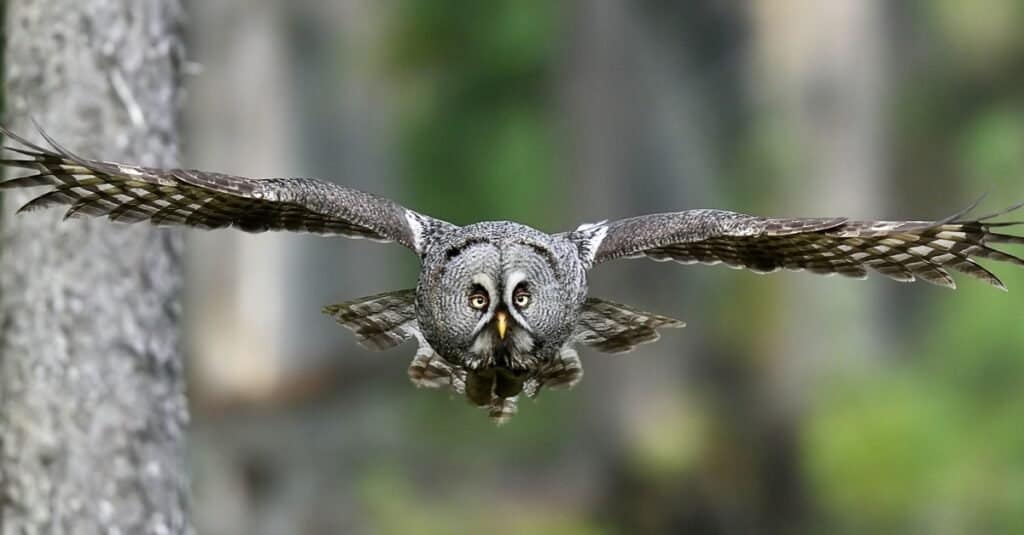
Great gray owls are found across North America.
©Erik Mandre/Shutterstock.com
The great gray owl is one of the most incredible birds you may see along the Pacific Crest Trail. Great gray owls have a wide range. A few places you can find these large owls are Canada, the United States, Finland, Norway, and Sweden.
Great gray owls have large, rounded heads with bright and wide yellow eyes. They also have grey faces and light with dark streak underparts. These gorgeous owls blend in well with trees during winter. While they range in size, most great gray owls are between 2 to nearly 3 feet long and weigh 1.28 to 4.19 pounds.
California Condors
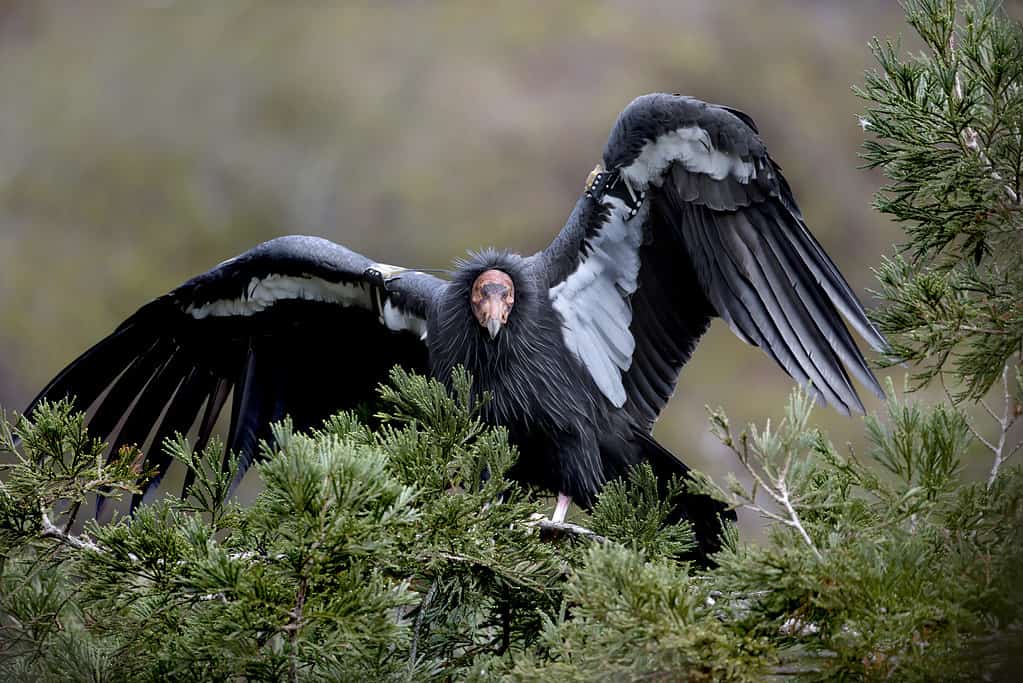
California condors were once extinct in the wild.
©pjsells/iStock via Getty Images
Also along the Pacific Crest Trail is the California condor, a New World vulture. These unique vultures are, sadly, listed as Critically Endangered on the IUCN Red List. However, they’ve made a remarkable comeback. California condors were previously extinct but reintroduced to parts of Utah, California, Arizona, and Baja California in Mexico. In 1987, only 27 California condors were left, and they were all housed in two captive breeding facilities in southern California.
If you’re lucky to feast your eyes on a California condor, you may notice they are massive! These big birds are 43 to 55 inches long, with wingspans ranging from 8 to 10 feet.
California Quails
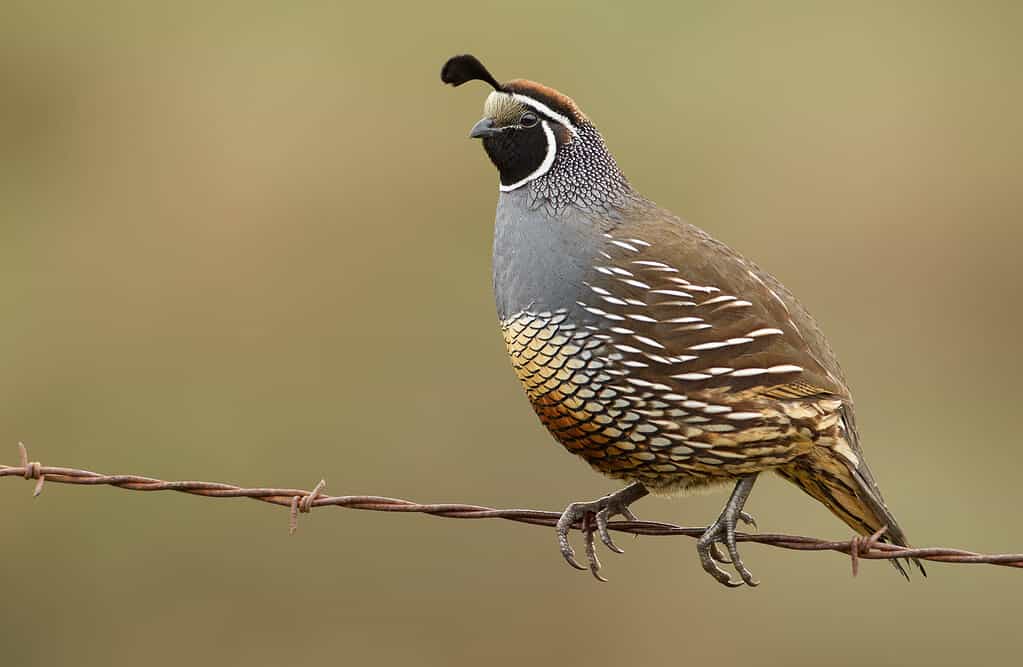
There are about seven California quail subspecies.
©Agnieszka Bacal/Shutterstock.com
The California quail is another bird you may encounter on the Pacific Crest Trail. These plump and short birds are easy to identify. However, there are at least seven recognized subspecies that vary slightly. Generally, though, California quails have a curving crest. Males are more vibrant than females. Female California quails are mainly grey-brown with light bellies. Males, on the other hand, have dark brown caps and black faces. Their faces are outlined with bold white streaks.
Red Crossbills

The red crossbill is a bird you may see on the Pacific Crest Trail.
©Henk Bogaard/Shutterstock.com
The red crossbill continues our list of 7 incredible birds along the Pacific Crest Trail. This gorgeous bird is listed as Least Concern on the IUCN Red List. It’s widespread in large parts of North America. As their name suggests, red crossbills have crossed mandibles, which they use to extract seeds from conifer cones and other hard fruits. Males and females look nearly identical, although males are orange-red, while females are green or yellow.
Pinyon Jays
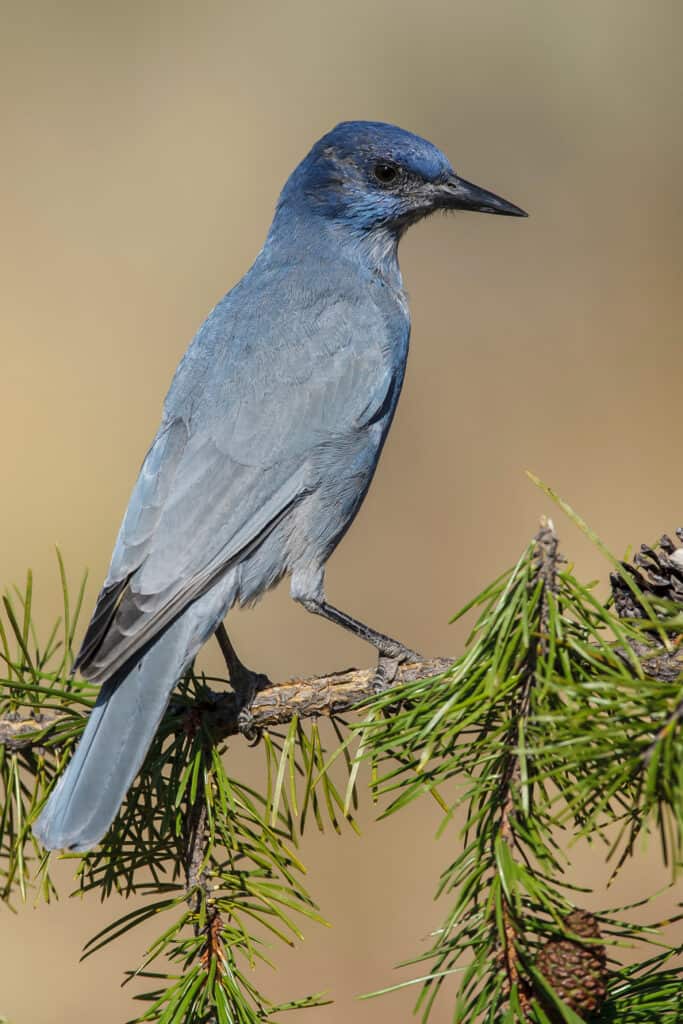
Pinyon jays are very social birds.
©Agami Photo Agency/Shutterstock.com
The pinyon jay is another bird that lives around parts of the Pacific Crest Trail. Pinyon Jays are currently listed as Vulnerable on the IUCN Red List. They are the only member of the genus Gymnorhinus. These unique birds are native to Western North America and live in Oregon, California, and Oklahoma. For most of the year, pinyon jays live in large flocks.
Dark-eyed Juncos
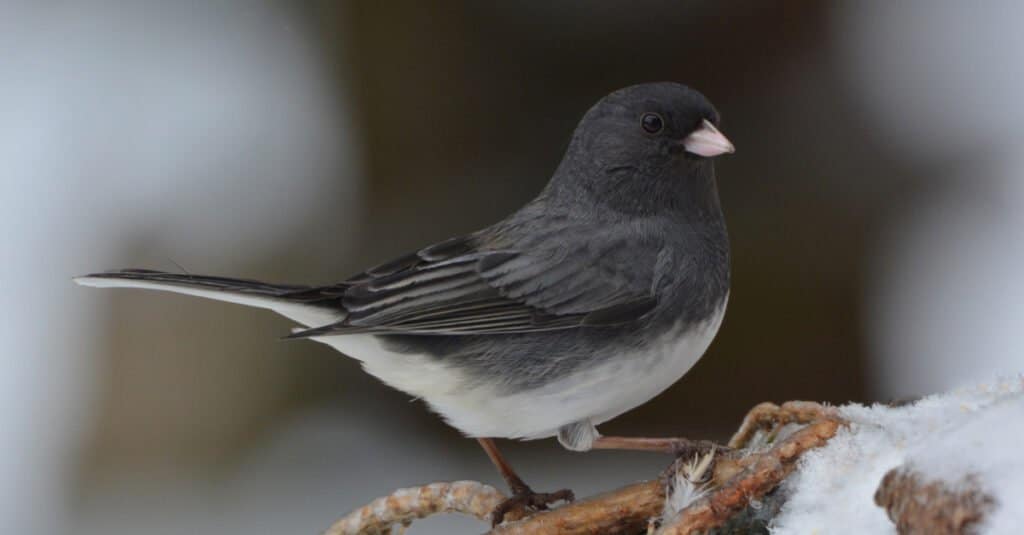
The female Dark-Eyed Junco has more muted coloring than the male.
©C. Hamilton/Shutterstock.com
The dark-eyed junco may also be seen along the Pacific Crest Trail. They are small birds, sometimes weighing less than an ounce. Dark-eyed juncos live in many different habitats. They can be found in open meadows, urban parks, roadsides, and mixed woods. These small sparrows live throughout North America. They are omnivores that consume small fruits, insects, grains, and sometimes seeds. These lovely birds are called snowbirds, as many subspecies reappear in the winter.
American Bushtits
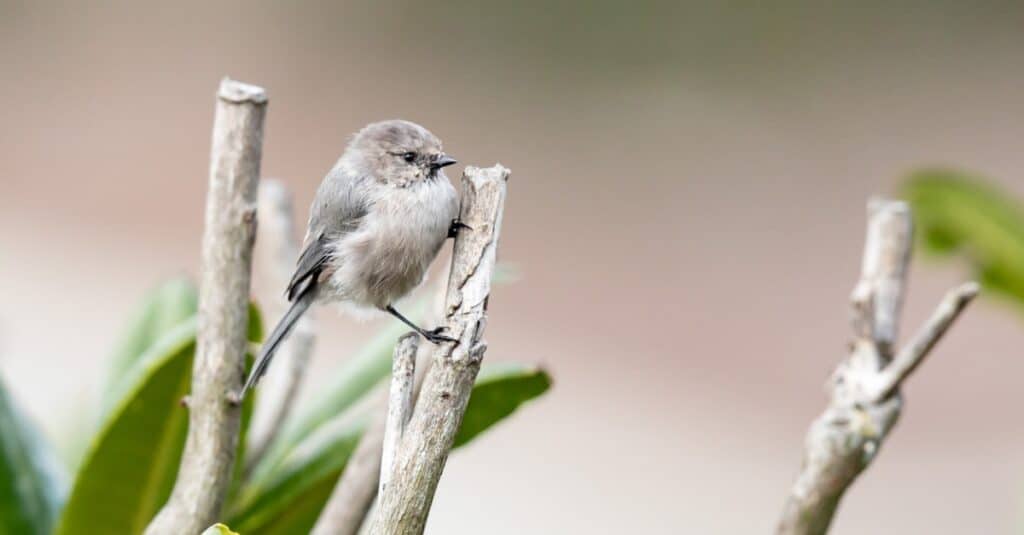
The American bushtit averages around three to four inches in length.
©iStock.com/Jeff Huth
Last but not least is the American bushtit, a small social songbird. They are ubiquitous in parts of western North America. American bushtits live as far north as northern Canada but may also be found as south as Guatemala. These songbirds are around 4.3 inches long, although their sizes vary slightly depending on the region. They can weigh as little as 0.18 ounces. American bushtits are short and plump with brown and grey plumage. Interestingly, females have pale eyes. American bushtits have a broad
The photo featured at the top of this post is © iStock.com/Banu R
Thank you for reading! Have some feedback for us? Contact the AZ Animals editorial team.







